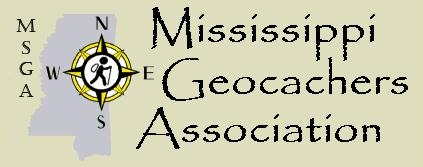Mississippi Blues Trail: Elvis Presley Traditional Cache
Mississippi Blues Trail: Elvis Presley
-
Difficulty:
-

-
Terrain:
-

Size:  (micro)
(micro)
Please note Use of geocaching.com services is subject to the terms and conditions
in our disclaimer.
This geocache is located at the birthplace of Elvis Presley.
Welcome to the Mississippi Blues Trail, your unforgettable journey into the land that spawned the single most important root source of modern popular music. Whether you're a die-hard blues fan or a casual traveler in search of an interesting trip, you'll find facts you didn't know, places you've never seen, and you'll gain a new appreciation for the area that gave birth to the blues.
Mississippi Blues Trail
Cache Challenge
The Mississippi Blues Trail was established by the Mississippi Bureau of Tourism to recognize the unique connection our state has with a style of music known as the "Mississippi Blues" or simply "the Blues." Many musicians acquired fame, and for some fortune, playing this style of music. The MBT decided to recognize these artists and their beginnings here in Mississippi. The MBT divided the state into five basic regions where Blues Trail markers are placed. These markers are in places of historical significance to the blues music heritage. Each marker tells about a specific piece of that history. The vast majority of these markers are in the Delta region in the northwest part of the state.
This challenge involves visiting those historical MS Blues Trail markers scattered out around the state of Mississippi...and even beyond. Participating cities include : Tupelo, Columbus, Jackson, Holly Springs, Cleveland, Clarksdale, University of Mississippi, Aberdeen, Meridian, Vicksburg...
At or near many of these markers there is a geocache hidden. Your quest is to visit these markers and find the geocaches associated with them.
Each Mississippi Blues Trail Geocache consists of one find towards the final goal of 50 Mississippi Blues Trail Geocaches in order for challenge completion for final.
Here is a bookmark link to the current blues trail caches -Mississippi Blues Caches
We hope your ventures along the way
to completion of this challenge are both
memorable and rewarding!

Elvis Presley revolutionized popular music by blending the blues he first heard as a youth in Tupelo with country, pop, and gospel. Many of the first songs Elvis recorded for the Sun label in Memphis were covers of earlier blues recordings by African Americans, and he continued to incorporate blues into his records and live performances for the remainder of his career.
Elvis first encountered the blues here in Tupelo, and it remained central to his music throughout his career. The Presley family lived in several homes in Tupelo that were adjacent to African American neighborhoods, and as a youngster Elvis and his friends often heard the sounds of blues and gospel streaming out of churches, clubs, and other venues. According to Mississippi blues legend Big Joe Williams, Elvis listened in particular to Tupelo blues guitarist Lonnie Williams.
During Elvis’s teen years in Memphis he could hear blues on Beale Street, just a mile south of his family’s home. Producer Sam Phillips had captured many of the city’s new, electrified blues sounds at his Memphis Recording Service studio, where Elvis began his recording career with Phillips's Sun label. Elvis was initially interested in recording ballads, but Phillips was more excited by the sound created by Presley and studio musicians Scotty Moore and Bill Black on July 5, 1954, when he heard them playing bluesman Arthur “Big Boy” Crudup’s 1946 recording “That’s All Right.”
That song appeared on Presley’s first single, and each of his other four singles for Sun Records also included a cover of a blues song—Arthur Gunter’s “Baby Let’s Play House,” Roy Brown’s “Good Rockin’ Tonight,” Little Junior Parker’s “Mystery Train,” and Kokomo Arnold’s “Milk Cow Blues,” recorded under the title “Milkcow Blues Boogie” by Elvis, who likely learned it from a version by western swing musician Johnnie Lee Wills. Elvis's sound inspired countless other artists, including Tupelo rockabilly musician Jumpin' Gene Simmons, whose 1964 hit “Haunted House” was first recorded by bluesman Johnny Fuller.
Elvis continued recording blues after his move to RCA Records in 1955, including “Hound Dog,” first recorded by Big Mama Thornton in 1952, Lowell Fulson’s “Reconsider Baby,” Big Joe Turner’s “Shake, Rattle and Roll,” and two more by Crudup, “My Baby Left Me” and “So Glad You’re Mine.” One of Elvis’s most important sources of material was the African American songwriter Otis Blackwell, who wrote the hits “All Shook Up,” “Don’t Be Cruel,” and “Return to Sender.” In Presley's so-called "comeback" appearance on NBC television in 1968, former bandmates Scotty Moore and D. J. Fontana rejoined him as he reprised his early Sun recordings and performed other blues, including the Jimmy Reed songs "Big Boss Man" and "Baby What You Want Me to Do." Blues remained a feature of Elvis's live performances until his death his 1977.
A little over a mile from this location on September 26, 1956, Elvis returned to Tupelo to perform two shows at the Mississippi-Alabama Fair and Dairy Show. Elvis Presley Day is proclaimed in Tupelo, Mississippi. Elvis' parents join him as he returns to the town of his birth as a big star. He performs two shows at the Mississippi-Alabama Fair and Dairy Show, the same fair at which he had performed at age 10. This time there are a hundred National Guardsmen surrounding the stage to control the crowds of excited fans. Below are photographs taken of that performance.
First to find: indyjonez!
Additional Hints
(Decrypt)
Qenva, whfg nobir fgerrg yriry
Treasures
You'll collect a digital Treasure from one of these collections when you find and log this geocache:

Loading Treasures